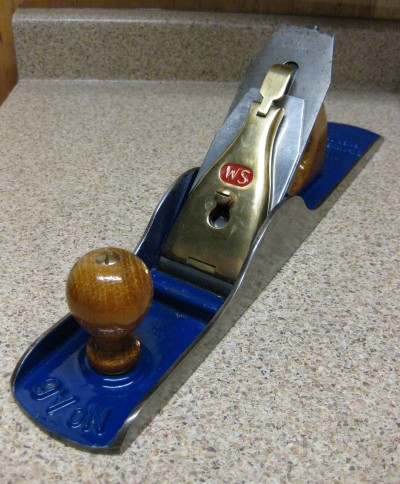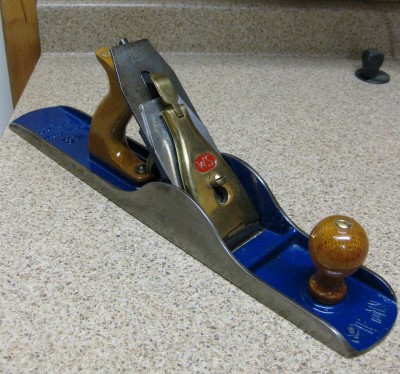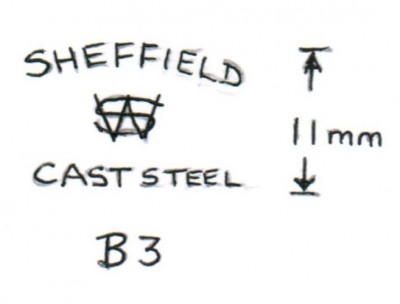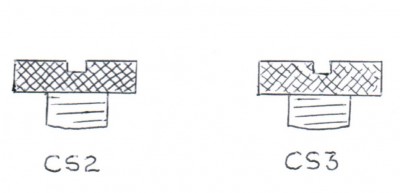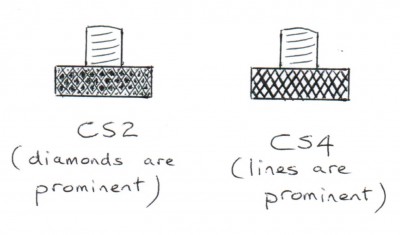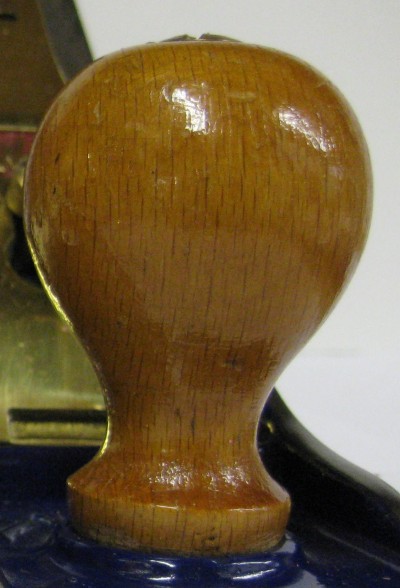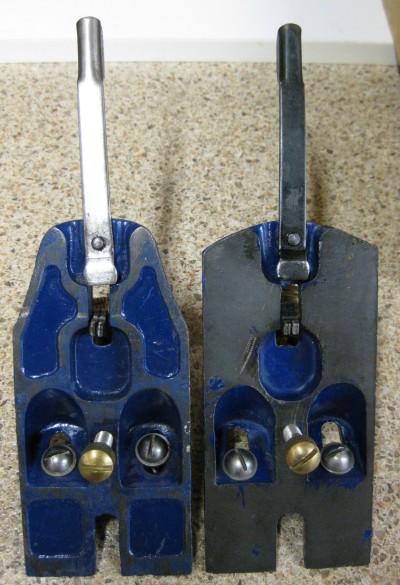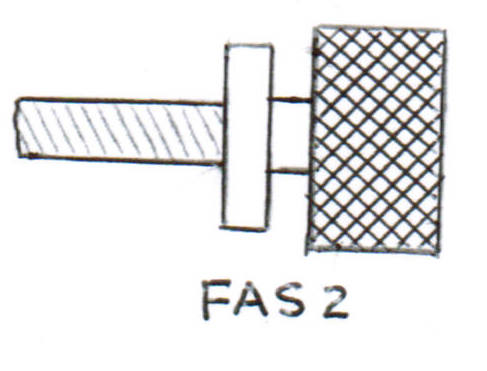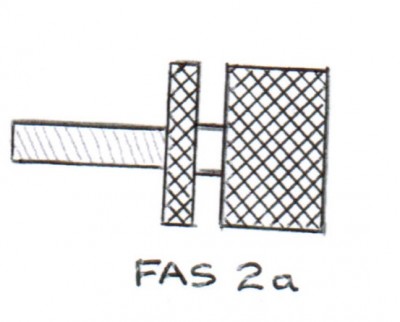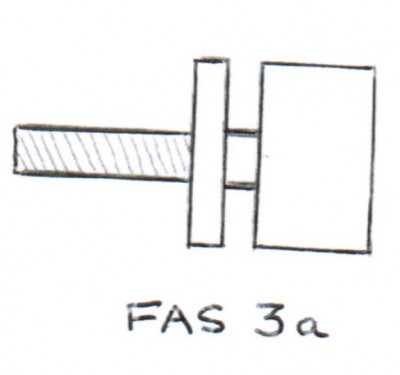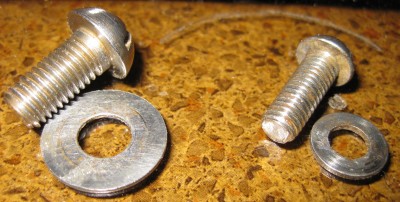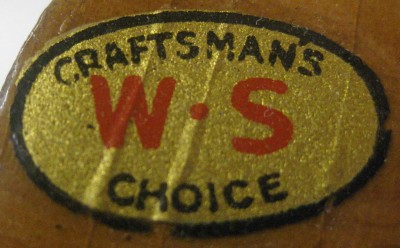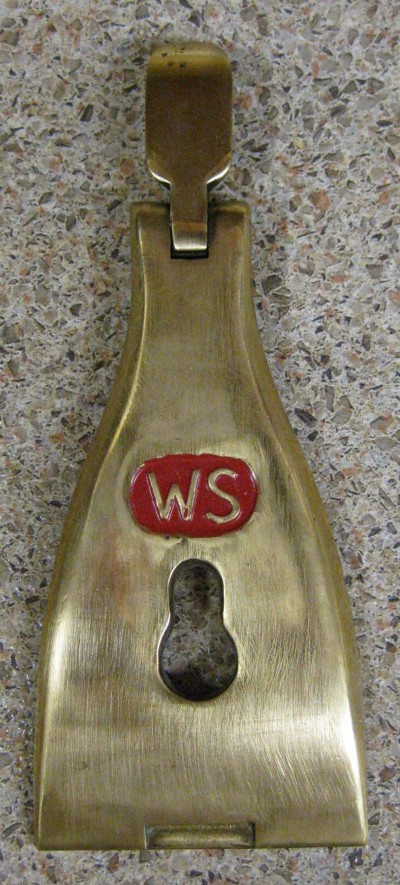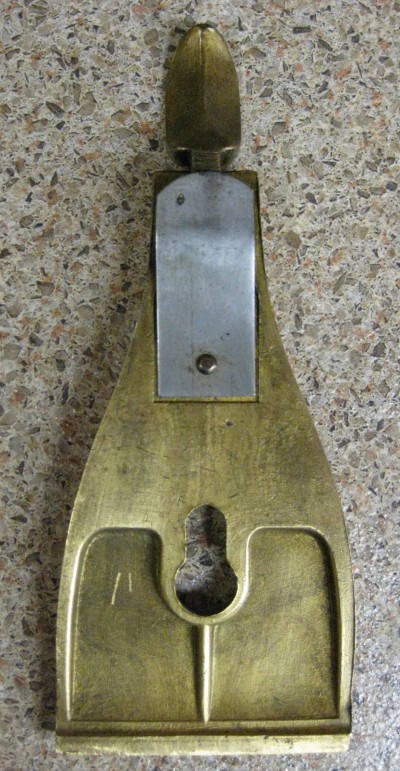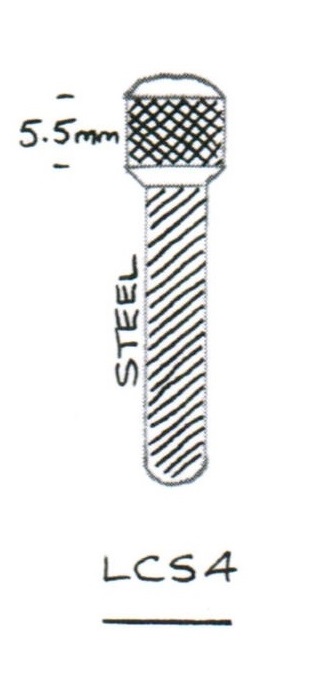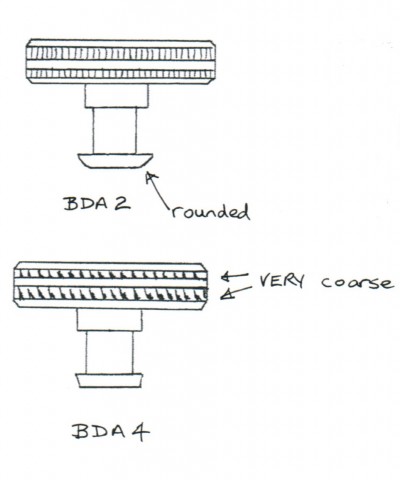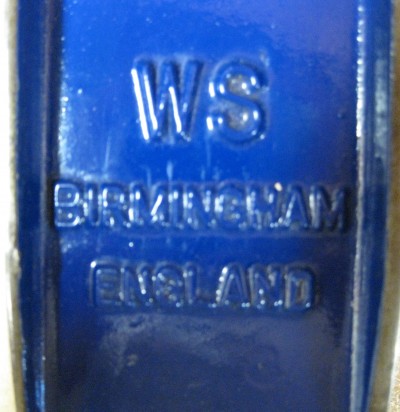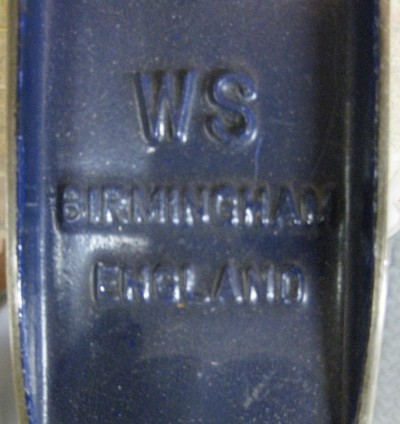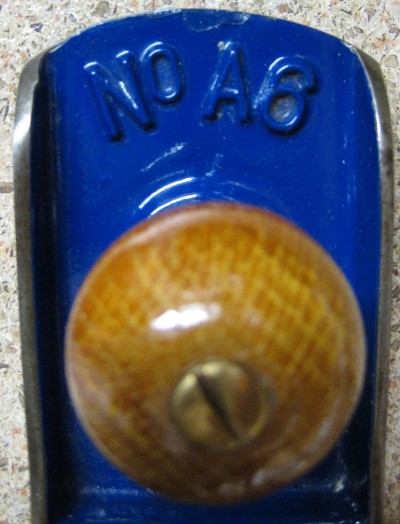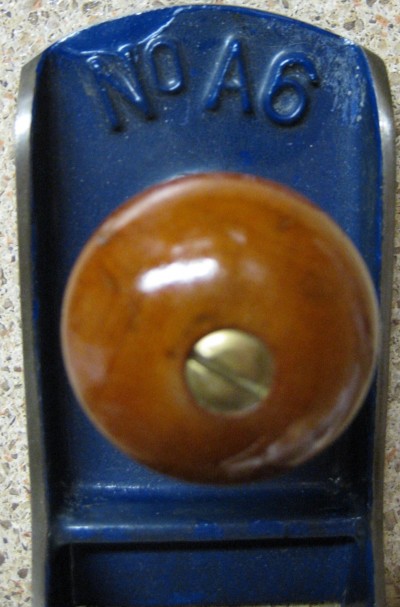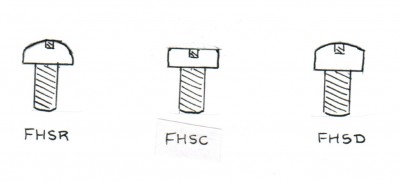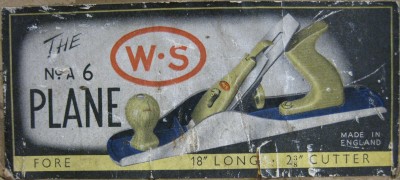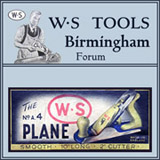This study is drawn from just 7 number A6 planes that I have presently.
The plane (earliest) that I have and in the box shows a retail price on the box of £1 10s 0d., which comparing to RECORD prices around that time means that this plane was produced and for sale in early 1944. The assumption here is that WS would not price their planes higher than the competition, and still stay in business! So if they priced their planes slightly lower (crafty!) then late 1944 may be more accurate.
The Base is 7.1cm wide and 45.7cm long.
The blades are all 6cm wide and a maximum of 19.5cm+ long, having a B3 impression.
The cap-irons all are Stamped , and the cap-iron screws are either CS2,CS3 or CS4.
The paint is not varnished on the earlier example and only lightly varnished on the later models.
The handle (H2 and H3) and front knob (all K3) are of varnished beech.
The earlier example has a steel round headed bolt securing the front of the handle to the base, whereas the later models have brass bolts.
The lateral Levers are all L2.
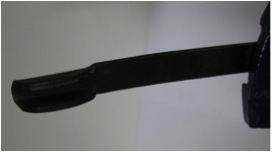
The earlier example has what I shall call an F1R frog , on the Right below, (more round than square, but I note that the larger WS planes do not fit neatly into the #4 ‘Analysis of Components‘ study). The later model frogs are F2, as shown on the Left below.
The Frog Adjusting Screws are either FAS2; FAS2a or FAS3a.
The Frog screws are all Round headed steel and of regular size as shown on the right below, but I would have expected that given the wider blade the larger screws would have been dominant as in the 4.1/2 .
Transfers are all RHT2
Lever caps are LC4 or LC5:
In LC4, WS letters show as a raised casting inside an oval window. The background painted oval window is finely stippled and is 23mm wide. The letters are 10mm high and with 2mm between them and the spring is secured by a small steel but brass coloured rivet. LC5 is almost the same as LC4 but the background is coarsely stippled. The letters are smaller at 8mm high with still 2mm between them and the oval window is now only 21mm wide. They all show only 2 Window pane inserts on the reverse side, as shown below right.
Look out for Lever Cap Type 4b (LC4b) [see ‘Analysis of Components’]
Lever Cap Screws are LCS4
Brass Depth Adjusters are BDA2 or BDA4.
Frog Landing Areas are FLA2.
The Base markings show that there were 2 different castings. All had the words/numbers ‘No A6‘ and ‘WS Birmingham England‘, but the later casting shows the N in No as being 14.5mm tall and the B in Birmingham as being 5.5mm wide. The earlier casting is the same in all respects but N is only 13mm tall and B is only 4mm wide. The later ‘BIRMINGHAM‘ is 56mm wide and the earlier casting shows it as only 54mm wide.
Later Earlier
Later Earlier
But having now studied a further example, I am confused. I have F1 frogs with both base castings, and F2 frogs with both base castings! It is hard to believe that both castings were available at the same time. Maybe the planes were made up from parts as the need arose and orders received from the Ironmongers. In which case the different base castings could easily be mixed up together, I doubt whether old and new stock parts were kept separately. I need more examples to draw any real conclusions so take the earlier/later conclusion with a grain of salt at this stage. It could be the actual reverse.
Fork Holding Screws are all Cheese headed FHSC
BOX LABEL:
The label is 13.5cm x 5.9cm
The box top is 47cm x 15cm

